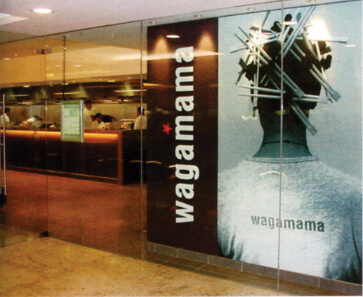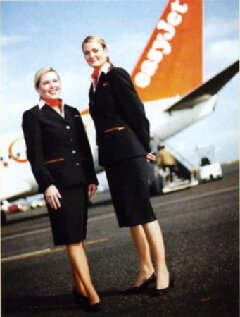The HR Marketers
As media proliferation splinters the marketing budget, employees are becoming an increasingly important communications channel. But if people are a medium, shouldn’t HR professionals have a greater say over the message? We look at the new breed of HR Marketers.
In the depths of last year’s waterlogged summer, the HR team at First Direct threw a ‘beach party’ for the bank’s 3,000 employees. It was held at the Leeds call-centre and featured, among other themed attractions, a contest to see how many people could fit onto a lilo.
The aim of the event was more than just injecting a bit of fun into the mid-season gloom. It was part of a continuing brand engagement programme that serves to remind the people in the front line of the distinctiveness of the brand they represent. Jane Hanson, head of HR at First Direct, explains that the brand is founded on the concept of ‘adult conversation’, with all the individuality and occasional quirkiness that that implies. “So it’s important that people don’t leave their personalities behind when they come into the call-centre”, she says, “and events like this help our people relax and stay who they are when they’re talking to customers.”

First Direct: treated its 3,500 employees to a beach-themed party, which featured a contest involving a lilo
First Direct has long been held up as an example of how good service, dispensed with a characteristic style, can give a brand real marketing edge. So Hanson’s talk, Getting Engaged, was one of the must-see sessions at last year’s CIPD conference. Yet the lessons of how the business manages the often prickly interface between Marketing and HR turn out to be remarkably simple. “We sit next to each other in open-plan space right on top of the call-centre”, she says, “and have a regular weekly session to talk about people and brand.” Significantly, the CEO also sits in that same open-plan space, a vast, ‘non-status environment’ whose black-and-white décor is a constant reminder of the brand’s iconoclastic take on life.
The ‘people medium’
The notion that employees are a vital marketing tool is hardly new, but what gives the subject renewed impetus is the pace of change in the media landscape. As traditional media become ever-more fragmented, so employees become disproportionately important as a communications medium in their own right. And not just for service brands: the ubiquitous helpline thrusts the human side of product brands, too, into the harsh consumer spotlight.
But it seems that this is one medium many marketers struggle to understand, and you don’t have to look far for the evidence. The ‘We’ll Call You’ column on the back cover of Marketing every week is a tell-tale indicator of the failure of big-name brands to get people and marketing joined up. Recently, Nike scored an embarrassing 1/10 for its utterly inept handling of a call relating to one of its own promotions, with the caller being passed from one uninformed and unhelpful operative to another. Hence one of the slickest marketing operations on the planet was humbled the moment living, breathing ‘touchpoints’ came into the equation. Johnson & Johnson’s Baby fared little better in a similar call, managing only 2/10, while not one among Bernard Matthews, Primark, Harrods and Defra could scrape above the 5/10 mark.
Arrange a regular meeting to talk about people and the brand
Align marketing and HR measurement tools
Attend this year’s CIPD conference, and pay for it out of the marketing budget
Invite HR to the next round of consumer research groups
Be prepared to listen to HR’s ideas for consumer marketing; they might just be better than your own
Where are marketers going wrong? Chief among the flaws of even those marketers who ‘get’ the significance of people is the tendency to rely on the techniques of persuasion in their attempts to bring employees on side. Marketers are in the persuasion business, so it is no coincidence that they turn ‘internal marketing’ into a well-meaning, and often well-presented, communications exercise.
But HR professionals understand that things are not quite so simple. The levers of persuasion inside an organisation can also involve incentives, pay and conditions – especially as it is often the lowest-paid employees who have the highest customer contact – so these will need to be addressed in concert with the impassioned brand presentations. There are other subtleties too: conceivably the new demands made by marketing might have regulatory implications, and if there happen to be gripes or issues in the workforce, then these will need to be confronted before asking people to add brand evangelism to their existing list of duties.
Not all marketers can arrange to sit next to their HR colleagues in open-plan space, always assuming they actually want to, but at the very minimum they need to establish and maintain a dialogue with HR and work together on a clearly thought-through brand engagement process. The ideal is a continuous programme involving internal research, interactive workshops, brand events, induction sessions, awards, incentives, intranet communications and annual brand reviews. It is not enough simply to rely on a bit of PowerPoint and a pep talk.
HR’s new breed
Those marketers either reluctant or slow to involve HR in the marketing process may be in for a shock: there is a new breed of HR professionals heading the other way, beating on the doors of marketing to make their views known. Not content merely to help disseminate the brand positionings and identities marketers arrive at, this new breed seeks to actively influence and shape the underlying marketing strategy. Their reasoning is simple: if people are a medium, then HR needs a say in the message, since employees, with their hopes, fears, ambitions, talents and foibles are a medium quite unlike any other.
In the vanguard of the new movement is Mike Campbell, People Director at easyJet. When the airline’s marketing strategy was overhauled in 2006, Campbell worked alongside the chief executive and the commercial director to develop the new customer proposition: low cost, with care and convenience. This elite team then built easyJet’s new marketing approach from people up.
“The touchpoints that define the easyJet brand to the consumer are all about interaction with people”, says Campbell, “so we had to get that linked to every mechanism of the company.” It has had a galvanising effect: when Andy Harrison, CEO of easyJet, announced sparkling annual results in November, with a bottom-line increase of 56%, he cited the group’s focus on ‘low-cost with care and convenience’ as the key factor.

Wagamama: iconic image of staff member Immy ‘embodied brand’
The restaurant chain Wagamama is another brand to root its essence in its employees. Glyn House, now the company’s Operations Director, was until recently responsible for both marketing and HR. “Wagamama is communicated via people”, he says. “When the brand was recently codified, we started with a picture of Immy, our typical employee, as what defines the Wagamama brand.”
House believes that “HR has to stop apologising for having a view and put itself at the heart of the business and think about how it is going to add value to the brand not just ‘how are we going to run HR?’ ”
Tracey Orr, Head of HR at Midlands Co-op concurs. Orr recently led the business through a brand migration programme, something that “as recently as five years ago would have been undertaken by marketing.” She sees the changes in HR being driven by competition, citing the brilliance of Virgin getting all staff to sign up to and live the brand. “Now we’ve all had to rise to that challenge”, she adds.
Significantly, HR’s new breed is getting the backing of chief executives. Troy Warfield, CEO of Kimberly-Clark, believes that it is important that HR and marketing work as business partners and have an equal voice on issues such as customer strategy. “So our HR people engage with the marketing agencies, meet customers and attend research”, he says. But Warfield acknowledges that professional tensions can arise. “It can be an awkward transition when HR move from being a fly on the wall to having a view. My role is to provide trust within the organisation and provide a context for why this is right.”
Warfield is unusual in placing such emphasis on people for product, rather than just service, brands. The Kimberly-Clark portfolio includes Andrex, Kleenex and Huggies, with a focus on innovation to improve everyday health, hygiene and well-being. “We have to make that real for the people on the inside first”, he says. “Even as a packaged goods company, new innovations will struggle unless there is genuine commitment across the organisation; it is not just about getting the right message to customers.”
Simon Barrow, chairman of People in Business, believes that today’s CEO is the natural guardian of the brand and that “it is in the CEO’s interest to get marketing and HR working closely together.” But CEOs are busy people and it is not hard to envisage the emergence of a new senior role just one level down in the corporate organogram: Chief Brand Officer (CBO), recruited from an elite pool of professionals with both marketing and HR backgrounds. Either way, the right of marketing to assume sole stewardship of the brand at the most senior level is under threat, and from an unexpected quarter.
A passion for people
So is this the future for HR – to break free of its administrative, payroll and process confines and re-emerge as an active force in the development of marketing strategy? Perhaps. But Jane Hanson, for one, thinks there is a danger of going too far. “There has been a gradual increase in pressure on HR to become more commercially minded”, she says. “But we should not let that blur what our discipline is really about: a passion for people.”
For now, at least, Hanson is content to confine her marketing input to the implementation, rather than the creation, of brand strategy. “It’s all about fostering an intuitive feel for the brand throughout the business”, she says, “and keeping our people close as a team.” Well, she should know. They eventually managed to squeeze 38 people onto that beach-party lilo, and you don’t get much closer than that.
By the autumn, the trio had redefined the customer proposition to distance easyJet from its no-frills competitors: ‘Low cost, with care and convenience.’ The first element of the message, of course, describes the airline’s pricing; ‘convenience’ refers to its policy of avoiding remote airports; while ‘care’ implies that easyJet’s cabin crew and customer service teams are well-trained and attentive.
To explain the brand positioning to staff, easyJet’s HR and marketing teams collaborated on a major internal brand-engagement programme. ‘The touchpoints that define the easyJet brand to the consumer are all about
But there was a hitch. Early internal research revealed that staff were unhappy with the structure of their shifts and disliked their orange uniform. Chief executive Andy Harrison responded by implementing changes to easyJet’s roster system and started wearing the uniform himself to demonstrate his solidarity with frontline staff. He then announced that employees would be asked to help design a replacement easyJet outfit themselves.
Last summer, easyJet’s cabin and flight crew were invited to attend interactive brand workshops, while the airline’s latest marketing message was explained in the staff magazine. The airline also revamped its internal awards scheme and gave incentives for staff to improve customer service.

easyJet: staff helped design uniforms
In November, easyJet announced a year-on-year profit increase of 56%. “Despite challenging conditions, revenue and profit improved strongly, reflecting the success of our positioning”, said Harrison at the time.

